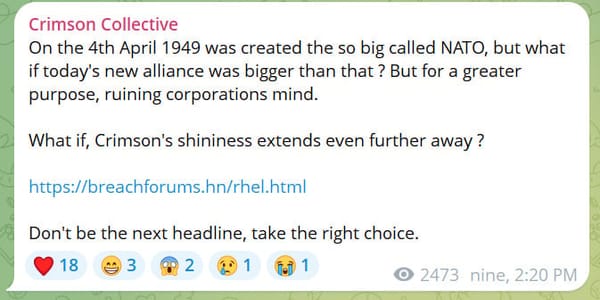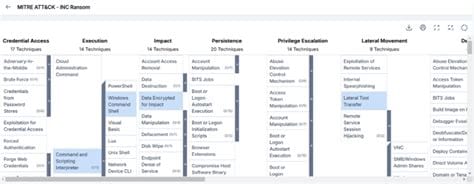Hackers Strike US Ivy League Schools Already Under Political Pressure

A wave of sophisticated cyber attacks has targeted half of the Ivy League institutions, exposing sensitive donor and student data while universities face mounting political scrutiny
In what cybersecurity experts are calling an unprecedented assault on American higher education, four of the eight Ivy League universities have fallen victim to sophisticated cyber attacks within the past six months. Harvard University, Princeton, the University of Pennsylvania, and Columbia University have each disclosed major data breaches, marking a troubling convergence of cybersecurity vulnerabilities and intense political pressure on elite academic institutions.
The Latest Target: Harvard's Billion-Dollar Fundraising Operation
Harvard University discovered on November 18 that its Alumni Affairs and Development Office systems had been compromised through a phone-based phishing attack. The breach targeted one of the wealthiest fundraising operations in higher education—Harvard typically raises more than $1 billion annually—and resulted in unauthorized access to donor information, event attendance records, and personal contact details of alumni, donors, students, and faculty.
"Universities like Harvard have a lot of valuable information like personal information about powerful people – politics, influencers, executives – and we know both criminals and countries target these institutions," said Sergey Shykevich, threat intelligence manager at Israeli cybersecurity firm Check Point Software Technologies.
The Harvard incident follows a troubling pattern that has emerged throughout 2025, with educational institutions facing unprecedented cyber threats that exploit both technical vulnerabilities and human error.

A Coordinated Wave of Attacks
Princeton University - November 10, 2025
Princeton disclosed that threat actors breached its systems by targeting a university employee through a sophisticated phone phishing attack. The attackers compromised a database containing biographical information about alumni, donors, students, and community members, including names, email addresses, telephone numbers, and home and business addresses. Princeton officials stated they discovered the breach and successfully removed the attackers from their systems within 24 hours.

University of Pennsylvania - October 31, 2025
Perhaps the most brazen of the recent attacks occurred at Penn, where hackers not only stole data but used the university's own email systems to send mass messages to students, alumni, staff, and faculty. The attackers claimed they gained full access to a university employee's account and exported data on 1.2 million individuals from university databases, including Penn's Salesforce CRM, SharePoint, Box file repositories, and marketing platforms.

The hackers sent profane emails accusing the school of being "elitist," "woke," and having "terrible security practices," while criticizing the institution's admissions policies. They claimed to possess information about "legacies, donors, and unqualified affirmative action admits" and threatened to leak data in violation of federal privacy laws.
Columbia University - Summer 2025
The most extensive breach affected Columbia University, where a politically motivated attacker compromised personal information of approximately 870,000 individuals, including Social Security numbers, health information, financial aid records, and admissions data. The hacker spent over two months infiltrating Columbia's systems, claiming to have accessed the Student Information System, Active Directory, and VMware ESXi hosts across multiple datacenters.
The attacker stated their motivation was to expose alleged continued use of race-based admissions practices following the 2023 Supreme Court ruling against affirmative action. Bloomberg confirmed the accuracy of stolen data by verifying information with eight Columbia students and alumni.

The Social Engineering Playbook
All four Ivy League breaches share a common attack vector: social engineering through phone-based phishing. Rather than exploiting technical vulnerabilities, the attackers manipulated human psychology to gain legitimate credentials from university employees.
This technique has proven devastatingly effective against educational institutions, which face unique challenges in maintaining security while preserving the open, collaborative environments essential to academic work. As highlighted in recent analysis of educational cybersecurity vulnerabilities, the sector has seen a 69% surge in ransomware attacks globally in Q1 2025.
"Education is such an easy target for threat actors, mostly because of the necessity for so many unsophisticated users to be on the network," explained Riley, a cybersecurity expert quoted in Inside Higher Ed's coverage of the breaches.
Political Context Amplifies the Crisis
These cyber attacks have struck at a particularly vulnerable moment for elite universities. The institutions face mounting political pressure from multiple directions:
- Federal Funding Threats: The Trump administration has frozen billions in research funds and threatened accreditation
- Admissions Scrutiny: Following the 2023 Supreme Court decision striking down affirmative action, universities face allegations of non-compliance
- Diversity Program Targeting: The administration has challenged support for diversity, equity, and inclusion initiatives
- International Student Restrictions: New policies affecting international student enrollment and visa processes
The White House has attempted to link federal funding to new restrictions on hiring, admissions, and tuition—a deal that several prominent schools, including the University of Pennsylvania, have declined. The administration stated it is "close to finalizing" negotiations with Harvard.
Some of the breaches appear explicitly tied to these political tensions. The alleged Penn hacker told The Verge they plan to sell the stolen data, while the Columbia attacker claimed their goal was to prove universities continued using race-based admissions after the Supreme Court ruling.
The Broader Educational Cybersecurity Crisis
The Ivy League attacks represent just the tip of a much larger problem facing American education. Analysis of the education sector's cybersecurity challenges reveals systemic vulnerabilities:
Financial Constraints: Since 2020, 1,681 higher education facilities have been affected by 84 ransomware attacks, with average recovery costs of $1.42-$1.58 million. Yet 66% of universities lack basic email security configurations.
Legacy Systems: Many institutions operate outdated technology. A 2025 UpGuard study found that 45% of universities had at least one asset running end-of-life PHP, and 48% used software with known exploited vulnerabilities.
Exposed Infrastructure: The same study revealed that 10% of universities—23% among the top 500—exposed Remote Desktop Protocol services to the internet, creating easy entry points for attackers.
Valuable Data Troves: Universities house extensive personal information including Social Security numbers, financial records, health data, and passport information—everything needed for identity theft and fraud. They also possess valuable intellectual property from cutting-edge research.
Other Elite Institutions Targeted
The Ivy League schools are not alone. New York University suffered a devastating breach in March 2025, when a hacker took over the university's website and exposed admissions data on over 3 million applicants dating back to 1989. The attacker, claiming affiliation with "Computer Niggy Exploitation," published datasets containing standardized testing scores, citizenship status, financial aid information, and demographic data.
The same group previously attacked the University of Minnesota, leaking 7 million Social Security numbers and other sensitive information. These attacks appear coordinated and ideologically motivated, specifically targeting universities in response to the Supreme Court's affirmative action ruling.
Australian universities have faced similar challenges, with Western Sydney University experiencing a major breach between June and September 2025 that exposed tax file numbers, bank account details, passport information, and health records.
K-12 Education Also Under Siege
The crisis extends beyond higher education. The notorious PowerSchool breach, perpetrated by 19-year-old Matthew Lane of Massachusetts, compromised data on 60 million students and 10 million teachers—representing what prosecutors called the largest breach of American schoolchildren's data in history.
Lane and his co-conspirators infiltrated PowerSchool's customer support portal and exfiltrated 70 million records to servers in Ukraine before demanding $2.85 million in Bitcoin. The breach affected educational institutions across the United States, Canada, and other countries, demonstrating the vulnerability of third-party education technology vendors.

The AI-Accelerated Threat Landscape
The sophistication of attacks has increased dramatically with the advent of generative AI. According to recent analysis, 40% of Business Email Compromise (BEC) emails in Q2 2025 were confirmed as AI-generated by multiple detection tools. AI has improved the quality of phishing and BEC messages, reducing grammatical and structural cues that traditionally signaled fraud.
This technological evolution makes it increasingly difficult for even trained employees to distinguish legitimate communications from sophisticated social engineering attacks—a challenge that proved costly for the Ivy League institutions.
The Human Cost
Beyond statistics and technical details, these breaches represent profound violations of privacy for millions of individuals. Students who shared sensitive information as part of college applications—from personal essays to financial aid details to health records—now face potential identity theft and fraud.
Donors who supported institutions they believed in have had their personal information and giving histories exposed. Faculty and staff members have seen their employment records, personal contact information, and in some cases Social Security numbers compromised.
For institutions that pride themselves on being guardians of knowledge and champions of privacy rights, the breaches represent reputational damage that may take years to repair.
Inadequate Legal Protections
Current laws designed to protect student data have proven woefully inadequate. The Family Educational Rights and Privacy Act (FERPA) lacks a private right of action, meaning students cannot directly sue universities for data protection failures. New York's SHIELD Act, meanwhile, sets only vague "reasonable" standards for cybersecurity measures.
As Columbia University Law Review noted in analyzing the NYU breach, "These existing laws, supposedly meant to protect student data, revealed imperfections such as limited enforceability and vague compliance standards. The victims, as a result, are left lacking meaningful recourse."
Multiple class action lawsuits have been filed against affected universities, but the statutory gaps leave victims without clear paths to judicial relief or meaningful accountability.
University Responses and Ongoing Investigations
The affected universities have taken various steps in response to the breaches:
- Immediate Containment: All institutions reported acting quickly to remove attackers' access and prevent further unauthorized entry
- Law Enforcement Cooperation: Each university has engaged federal law enforcement, including the FBI, in ongoing investigations
- Victim Notification: Institutions have sent data breach notifications to potentially affected individuals
- Credit Monitoring: Universities are offering credit monitoring and identity protection services to victims
- Third-Party Expertise: Schools have retained cybersecurity specialist consultants to investigate incidents and strengthen defenses
However, questions remain about the adequacy of these responses. Columbia University took nearly three months to begin notifying affected individuals about a breach that began in May 2025, potentially violating state and federal notification requirements.
The Path Forward
Cybersecurity experts emphasize that defending educational institutions requires a multifaceted approach:
1. Enhanced Security Infrastructure
- Implementing multi-factor authentication across all systems
- Deploying advanced email security solutions to detect sophisticated phishing
- Updating legacy systems and patching known vulnerabilities
- Implementing zero-trust architecture principles
2. Employee Training
- Regular, realistic phishing simulations
- Education on social engineering tactics
- Clear protocols for verifying unusual requests
- Creating a security-conscious institutional culture
3. Third-Party Risk Management As demonstrated by the PowerSchool incident, organizations must thoroughly vet third-party vendors and ensure they maintain robust security practices.
4. Incident Response Planning Cybercriminals often target periods when security teams are understaffed or distracted. Organizations need comprehensive incident response plans that account for holidays, summer breaks, and other vulnerable periods.
5. Data Minimization Universities should reassess what personal information they actually need to collect and retain, implementing policies to minimize unnecessary data storage.
Federal Investigation Underway
With multiple Ivy League schools reporting intrusions within months of each other, federal officials and cybersecurity researchers are examining whether the attacks represent isolated opportunistic breaches or a coordinated campaign.
The Department of Homeland Security's 2024 threat assessment report identified K-12 districts as "a near constant ransomware target," citing budget constraints and the critical nature of educational services. The same vulnerabilities affect higher education, where the combination of valuable personal data, limited cybersecurity resources, and the need for relatively open systems creates an attractive target for both profit-motivated criminals and ideologically driven hacktivists.
Industry-Wide Implications
The Ivy League breaches serve as a warning for all sectors that handle sensitive personal information. Key lessons include:
- Social Engineering Remains Devastatingly Effective: Even prestigious institutions with substantial resources fall victim to well-executed phone phishing attacks
- Human Factors Trump Technical Defenses: The most sophisticated firewalls and encryption systems cannot protect against employees who unwittingly provide legitimate credentials
- Political Targeting Increases Risk: Organizations involved in contentious political or social issues face elevated threats from ideologically motivated attackers
- Response Speed Matters: Quick detection and containment can limit damage, as Princeton's 24-hour response demonstrated
- Transparency Is Essential: Delayed or inadequate notification to victims compounds the harm and may violate legal requirements
Looking Ahead
As the 2025-2026 academic year progresses, educational institutions at all levels face the urgent imperative to strengthen their cybersecurity postures. The attacks on Harvard, Princeton, Penn, and Columbia demonstrate that reputation, resources, and elite status provide no immunity from sophisticated cyber threats.
The convergence of political pressure, ideological targeting, and technical vulnerabilities creates a perfect storm that universities must navigate while maintaining their core missions of education, research, and service.
For the millions of students, donors, faculty, and staff whose information has been compromised, the path forward involves vigilant monitoring for identity theft, understanding their legal rights, and demanding accountability from institutions that failed to adequately protect their data.
The broader education sector must learn from these high-profile breaches and implement comprehensive security measures before the next attack strikes. As research into education sector cybersecurity shows, the question is not if additional attacks will occur, but when—and whether institutions will be prepared to defend against them.
Additional Resources
For more information on educational cybersecurity threats and best practices:
- Educational Institutions Under Siege: Analysis of the Growing Cybersecurity Crisis
- The PowerSchool Breach: How a Teenager Stole 70 Million Records
- School Cyberattacks: A Growing Crisis Threatening Student Data
- Western Sydney University Breach: Australia's Education Sector Crisis
- Major Cyber Attacks 2025: Comprehensive Analysis











